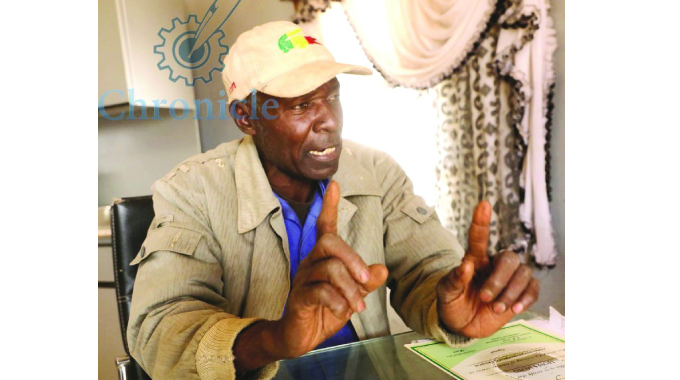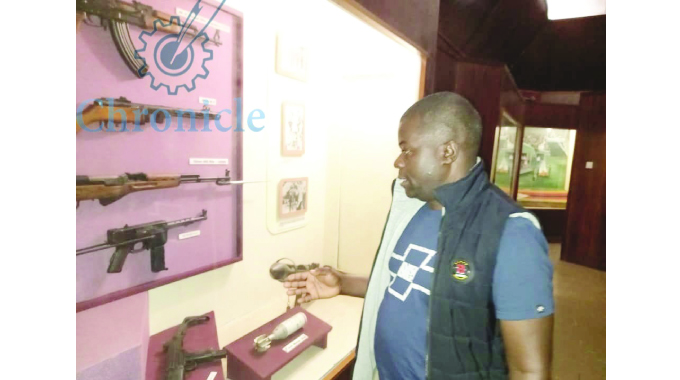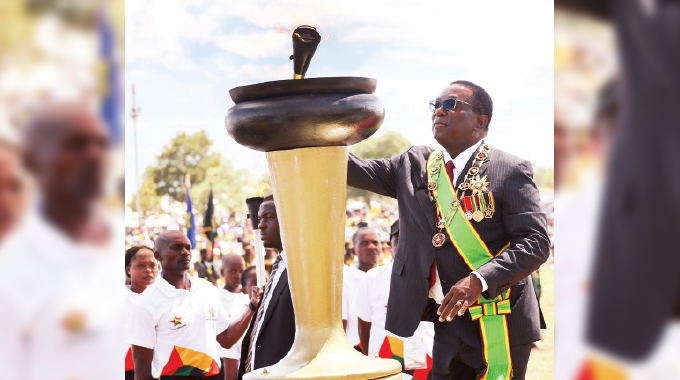Ex-Zipra guerilla now a successful farmer

Sikhumbuzo Moyo, Senior Reporter
EX-ZIPRA guerrilla Cde Moses Moyo is a beneficiary of the land reform programme and owns a plot under the A1 model in Makokomba village in Umguza District. He now has what he fought for – the land.
During the bitter and protracted war of liberation against white minority rule that deprived indigenous Zimbabweans of the right to their land, Cde Moyo was a multi-weapon handler – deadly with AK-47, Aka-M and the weapon of mass destruction, bazooka.

Cde Moses Moyo
He took up arms to fight so that the black majority would have land and become economically empowered.
Now 42 years after the end of the war, Cde Moyo is a diversified farmer who grows cabbages and tomatoes.
He does poultry as well. Now he has 200 Sasso chicks and 37 grown birds. Cde Moyo also farms maize on seven hectares, selling half of his harvest every year to the Grain Marketing Board to help feed the nation.
He owns 30 head of cattle and is hopeful his herd will grow. Cde Moyo is a survivor of the December 1979 savage attack by Rhodesian forces at Cross Jotsholo.
He was in a group of 22 freedom fighters who were on their way to St Paul’s assembly point following the declaration of the ceasefire to end the bitter war of independence.
They were on a Pullen bus coming from Jotsholo Growth Point. Eleven of Cde Moyo’s comrades did not make it after the ambush by enemy forces.
“We went to war to get land and I now own it and reaping the benefits of having my own piece of land.
I started cabbage and tomato farming around 2014 although it was on a small piece of land but when I realised that it was blossoming I then decided to expand and right now I planted 3 200 cabbages which when sold, are expected to give me around R10 000 against a cost of production of R4 000,” said Cde Moyo.
He said he uses goat manure on his cabbages and when they are about to mature, he applies fertiliser. Thereafter, he will be ready to reap what he would have sowed.
He has a ready market from shop owners in Tsholotsho who buy in bulk while villagers in Nyamandlovu, while not purchasing in bulk, also give him business.
“I plant my tomatoes on 12 rows with each row measuring 800m.
Tomatoes, unlike cabbages, need a lot of attention otherwise one risks losing the whole crop despite the costs involved.
From the tomato proceeds, I then started the poultry business and the 200 chicks I have now are my fourth order,” said Cde Moyo.
While some customers collect their own orders from his plot, Cde Moyo uses his donkey-drawn scotch cart to deliver larger orders to his customers who have no means of collecting them.
Cde Moyo said his prices are competitive as he does not want to fleece people.
“I believe people or shops who peg high prices should be taken to task in their individual capacities not for us to suddenly blame the Government.
My prices are very competitive, if not low because I know that most of my customers are buying for resale so if mine are high, that person will also put a big markup which eventually affects the final consumer who will find a loophole to unfairly lay the blame on the Government,” said Cde Moyo.
While independence was achieved in 1980, vast tracts of land still remained under the ownership of whites.
As tensions kept on rising from the majority who were getting more and more impatient with each passing day due to the still persisting land injustice, Government embarked on the fast track land reform programme in 2000.
The Government recovered land from some 4 000 whites and redistributed it to more than 250 000 indigenous farmers under two models, A1 and A2.
The A1 model allocated small plots for growing crops and grazing land to less-resourced farmers, while the A2 model allocated farms to new black commercial farmers who had the skills and resources to farm more profitably, reinvest and raise agricultural productivity.
Cde Moyo said Government should have embarked on the fast track land reform programme in 1980.
“Land reform was a necessary move by the Government because that is exactly what we fought for.
In fact, this programme was supposed to start immediately upon the attainment of independence in 1980 but it didn’t which led to some freedom fighters becoming lodgers in a land they fought for while others became vendors, pushing scanias to earn a living because they did not attain much education as they had to abandon school to pick up arms. Nevertheless, it’s better late than never.
We now have the land,” he said.











Comments